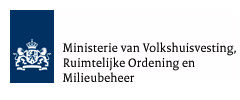Could Playing and Swimming in the Pool Be More Than Just Fun and a Good Exercise for Pregnant Women and Young Children?
Series of studies conducted by Belgian scientists suggest that chlorinated indoor pools are a significant factor in the increase of early childhood asthma and testicular damage in boys.
01.02.2012 |WECF
In the case of pregnant women, the most recent studies suggest that exposure to chlorine in swimming pools does not negatively affect the pregnancy outcomes. But due to the fact that chlorine can cross even the placental barrier, the best is still to minimize the long term exposure to such chemical.
Regarding the increased prevalence of allergic diseases such as atopic asthma and eczema in children in the industrialized countries, Dr. Bernard suggests that it is again due to the chlorine in indoor pools. He namely argues that the increasingly greater amount of young children attending such pools over the last decades depicts a positive correlation with the growing incidence of early childhood asthma. Thus the exposure of children and especially infants to products of chlorination, such as those found in indoor pools, might lead to a greater risk of them developing breathing problems.
Further, in June 2011, Dr. Bernard published another study according to which swimming in indoor, chlorinated pools during childhood might cause testicular damage. In particular, the study suggests that the attendance of indoor chlorinated pools during childhood is likely to reduce levels of serum inhibin B and total testosterone (both of which are indicators of sperm count and mobility). Although Dr. Bernard himself points out that these findings need to be replicated by independent studies, they nevertheless stress the importance of enforcing regulations and controls of chlorine limit values in swimming pools, especially in pools attended by young children.
So what can be concluded? This article shall by no means discourage you from swimming! So far, the chlorine is probably the most effective method of disinfection if used properly and tested regularly. Thus, for the time being, those with passion for swimming are advised to visit only those indoor pools that are approved by national authorities and to avoid as much as possible poorly maintained and insufficiently ventilated pools with high levels of chlorine in the water and in the air.
References:
Bernard, A. et al. (2003) Lung hyperpermeability and asthma prevalence in schoolchildren: unexpected associations with the attendance at indoor chlorinated swimming pools, Occup Environ Med, Vol. 60, p. 385-394
http://www.ncbi.nlm.nih.gov/pmc/articles/PMC1740550/pdf/v060p00385.pdf
Bernard, A. et al. (2006) Chlorinated Pool Attendance, Atopy, and the Risk of Asthma during Childhood, Environmental Health Perspectives, Vol. 114, No. 10, p. 1567-1573
http://www.ncbi.nlm.nih.gov/pmc/articles/PMC1626429/pdf/ehp0114-001567.pdf
Bernard, A. et al. (2007) Infant Swimming Practice, Pulmonary Epithelium Integrity, and the Risk of Allergic and Respiratory Diseases Later in Childhood, Pediatrics, Vol.119, No 6, p. 1095-1103
http://pediatrics.aappublications.org/content/119/6/1095.full.pdf
Bernard, A. and Nickmilder, M (2011) Associations between testicular hormones at adolescence and attendance at chlorinated swimming pools during childhood. International Journal of Andrology, Vol. 34, p. 446-458
http://onlinelibrary.wiley.com/doi/10.1111/j.1365-2605.2011.01174.x/pdf
CNN: How safe is your pool?
By Jacque Wilson, September 22, 2011
http://edition.cnn.com/2011/09/22/health/chlorine-indoor-swimming-pools/index.html
Learn about WECF activities in the field of Chemicals and Health
At our website www.projectnesting.org you can find more information about how to create a toxic free environment for your baby.
Visit the Safe Toys Coalition to learn about toys safety and toxic free toys.
Related News
Meet the Winners of the Gender Just Climate Solutions Award at COP24
On the 70th anniversary of the Universal Declaration of Human Rights, we awarded Gender Just Climate Solutions Winners at the climate negotiations in Katowice, Poland
11.12.2018
Invitation: Gender Just Climate Solutions Award 2018
10 December, COP24 Katowice
04.12.2018
Getting to the Future We Want
4-7 November, Brussels: European Environmental Bureau’s (EEB) Annual Conference
12.11.2018
GoodFood4All
WECF and partners all over Europe start GoodFood4All Campaign
06.11.2018
#Ruralwomen: join our Women2030 campaign!
15.10.2018






































